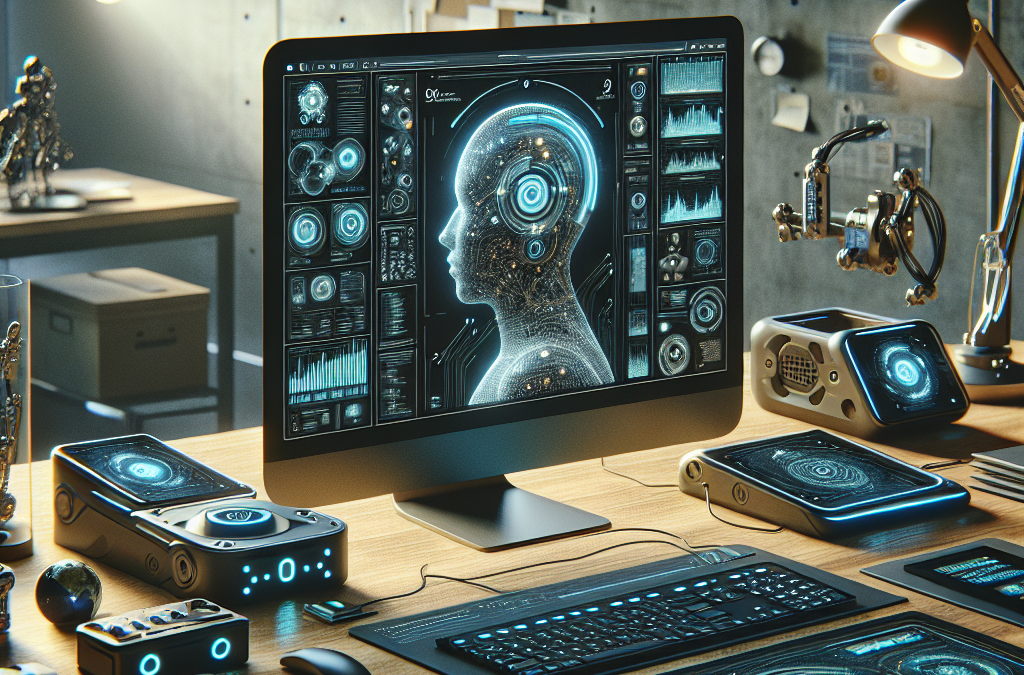
Unlock Your Workflow with AI Tools 2025
Harnessing the Power of AI Tools to Revolutionize Your Workflow
In today’s fast-paced digital landscape, keeping productivity high while managing an increasing number of tasks can be overwhelming. Fortunately, AI tools have emerged as game-changers, transforming the way individuals and teams work. These intelligent systems not only automate repetitive tasks but also enhance decision-making, communication, and creativity. Whether you’re a freelancer, a project manager, or part of a large enterprise, integrating AI tools into your daily routine can unlock new levels of efficiency and innovation. This article explores the top strategies and applications of AI tools in 2025 to help you streamline your workflow effortlessly.
Understanding AI Tools and Their Role in Modern Workflows
Artificial intelligence tools refer to software solutions powered by machine learning, natural language processing, computer vision, and other advanced technologies that automate complex tasks or provide valuable insights. In 2025, these tools are more accessible, user-friendly, and customizable than ever before.
Types of AI Tools Commonly Used in Workflows
– AI-powered automation platforms for routine task management
– Intelligent virtual assistants for scheduling and communication
– AI-driven data analytics tools for actionable business insights
– Natural language generation tools for content creation
– Image recognition and processing software
These AI tools are crafted to reduce manual effort, minimize errors, and accelerate project timelines, making them indispensable in various industries.
Benefits of Incorporating AI Tools
– Enhanced productivity by automating redundant activities
– Improved accuracy through data-driven insights
– Better time management and prioritization
– Cost savings by reducing the need for manual labor
– Boosted creativity with AI-generated suggestions
The value of AI tools extends beyond simple automation; they empower teams to focus on strategic tasks that require human intuition and creativity.
Top AI Tools in 2025 to Streamline Your Workflow
With many AI tools available today, choosing the right ones can be daunting. Below are some of the most impactful AI tools you should consider adopting to elevate your workflow.
Automation and Task Management
1. Zapier and Make: Automate workflows by connecting apps and services for seamless task execution.
2. Microsoft Power Automate: Integrates with Microsoft 365 to simplify repetitive tasks, freeing time for critical work.
3. Trello with Butler AI: Adds automation to project boards, such as creating cards or assigning tasks based on triggers.
Communication and Collaboration
– ChatGPT and Jasper AI: Assist in drafting emails, reports, and meeting summaries quickly and professionally.
– Otter.ai: Transcribes meetings in real-time to ensure no detail is missed and enables easy sharing.
– Grammarly and Writer AI: Enhance writing clarity and tone, maintaining professionalism across communications.
Data Analysis and Decision Support
– Tableau with Einstein AI: Enhances data visualization by suggesting trends and predictive analytics.
– Crystal Knows: Uses AI to analyze communication styles, helping tailor messages for better engagement.
– Google Analytics with AI Insights: Provides automated recommendations to optimize website performance.
Each of these AI tools is designed to integrate smoothly into existing workflows, amplifying productivity without steep learning curves.
Implementing AI Tools Effectively in Your Daily Workflow
To maximize the benefits of AI tools, strategic implementation is essential. A haphazard approach can create confusion and reduce trust in technology.
Step 1: Identify Workflow Bottlenecks
Begin by mapping your current processes to spot repetitive, low-value tasks. For instance, if scheduling meetings consumes considerable time, AI scheduling assistants can replace manual coordination.
Step 2: Choose AI Tools Aligned With Your Needs
Not every AI tool will fit your workflow. Evaluate tools based on:
– Integration capabilities with your existing software
– Ease of use and training requirements
– Potential impact on productivity and accuracy
Step 3: Train Your Team and Define Protocols
Introduce the AI tools gradually, provide training sessions, and set clear guidelines on when and how to use them. This boosts adoption rates and safeguards data privacy.
Step 4: Monitor, Measure, and Optimize
Use KPIs such as time saved, error rates, and output quality to gauge AI performance. Collect user feedback regularly and iterate your process for continuous improvement.
The Future of AI Tools in Workflow Management
Looking ahead, AI tools are set to become even more sophisticated, with advances in contextual understanding, emotional intelligence, and autonomous decision-making.
Integration of AI with Emerging Technologies
Expect deeper integration between AI tools and technologies like augmented reality (AR), virtual reality (VR), and Internet of Things (IoT), creating immersive and adaptive work environments. For example, AR-enabled AI assistants could provide on-the-spot training or troubleshooting in physical workspaces.
Customization and Personalized AI Experiences
AI tools will increasingly tailor their functionalities to individual user preferences and behaviors, ensuring higher relevance and productivity. Personal AI coaches may track your work habits and suggest personalized workflow adjustments.
Maximizing Productivity While Maintaining Balance Using AI Tools
While AI tools offer remarkable productivity gains, it’s important to avoid over-reliance and maintain a healthy work-life balance.
– Set boundaries for AI assistance; avoid burnout by delegating only appropriate tasks.
– Use AI to manage distractions by filtering notifications or prioritizing tasks.
– Leverage AI for learning and development, freeing time for skill enhancement.
Thoughtfully combining human creativity with AI efficiency will unlock sustainable productivity and job satisfaction.
Key Takeaways and Next Steps to Unlock Your Workflow with AI Tools
AI tools present transformative opportunities to elevate your workflow through automation, intelligent communication, and data-driven decisions. The essential first steps include identifying bottlenecks, choosing appropriate AI solutions, and fostering team adoption. As AI continues to evolve, staying informed and adaptable will keep you ahead in productivity.
To start transforming your workflow today, explore AI tools that best fit your environment and experiment with small projects. For personalized guidance and cutting-edge strategies on leveraging AI tools effectively, feel free to reach out at khmuhtadin.com and unlock your true work potential.
